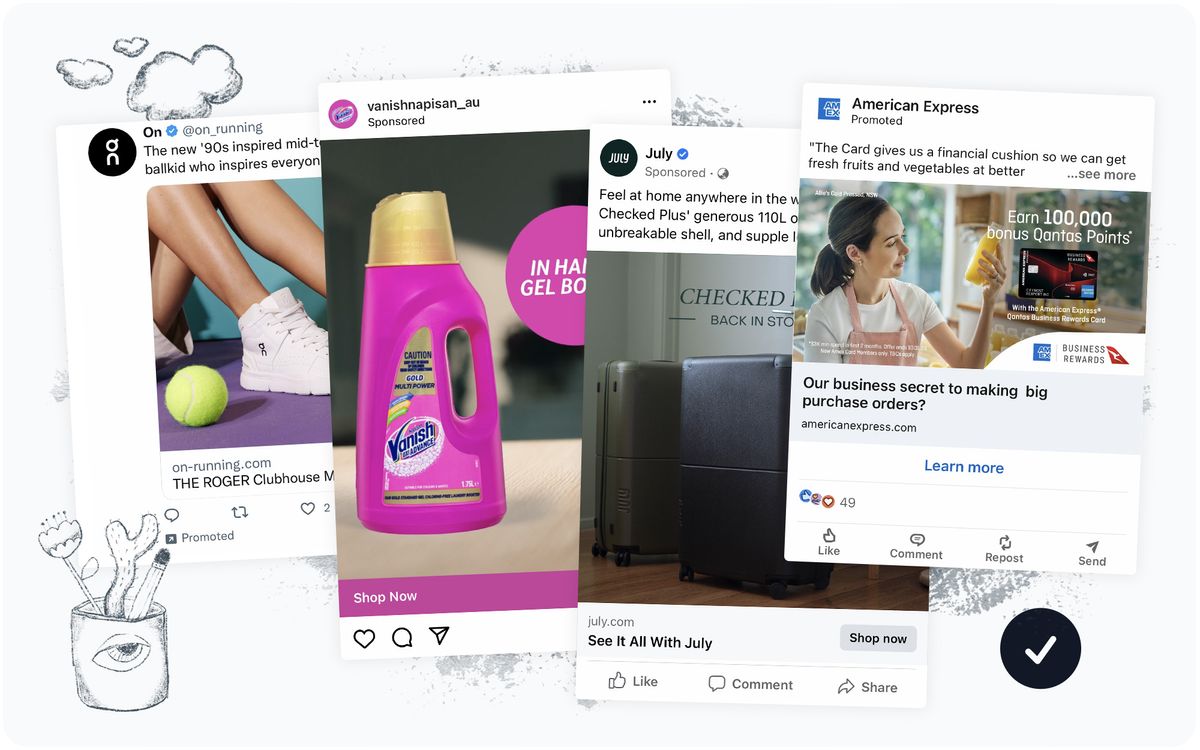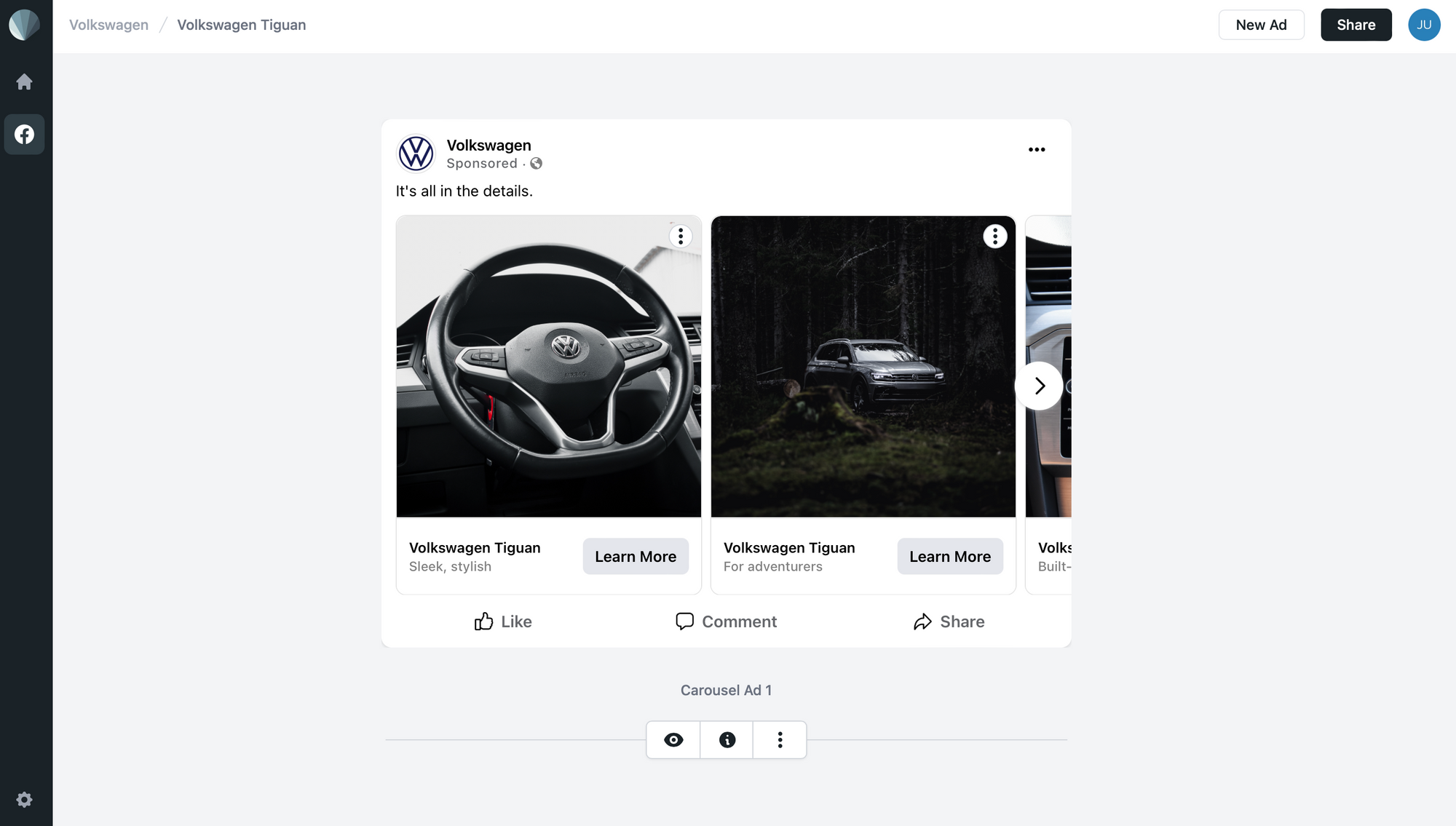4 Ways to Pitch Better Social Media Ad Campaigns to Clients
A great social media ad campaign pitch improves client conversion and benefits your reputation. Here are four ways to improve yours.

Every new pitch is an opportunity to impress your clients not only with a great idea but with proof of concept and an execution plan. But as much as a great pitch earns brownie points, a bad one hurts your reputation and wastes valuable resources.
Putting more time into developing great pitches is a better use of your resources in the long run. It minimizes revisions and reflects your brand’s standard of quality.
But how do you make sure every social media ad campaign you pitch is primed to go across well? It’s simple: understand what goes into a quality ad campaign and display it in the most enticing way.
What Makes a Good Social Media Ad Campaign?
When designing a new ad campaign, it’s helpful to gain perspective by reflecting on what is top of mind for your client’s brand and audience. You’ll find that great ideas are often located in the space where short- and long-term business goals intersect with customer needs.
There are four key ingredients to a great social media ad campaign:
- Quality content: Your ad’s content must be valuable to your audience. It should be well-written and intentionally designed, containing an incentive in the form of a CTA.
- Brand consistency: Every marketing campaign must be true to the brand it represents—otherwise, it breeds confusion. A representative tone, voice, and visual elements will reinforce brand identity and build a stronger association.
- Trackable: If a campaign isn’t trackable, there’s no way for you to tell what needs to be tweaked in order to yield results. It’s important to have identifiable metrics that you’ll use to track progress.
- Customized to each platform: Best practices will vary across platforms, and you can’t expect results if campaigns aren’t adjusted to suit the needs of the users in a particular online space.
All of these factors should be included as part of your execution plan during a pitch. A well-planned campaign gives your client confidence to give you the thumbs up. And as a bonus, you’ll have a campaign that’s almost ready to launch.
Challenges for Ad Agencies
Pitching campaigns and getting them approved can be a taxing process, and there are some common challenges that agencies may encounter. These include:
- Gathering requirements. Some clients don’t know what they want to get out of an ad campaign or how much they’re willing to put into it, so establishing clear expectations can be difficult. Pitches with complete information can help them gain a better idea of outcomes and commit to what they’re willing to invest.
- Getting approvals. Getting the go-ahead to launch a campaign can be difficult, especially when too many stakeholders are involved. A clear pitch and a single point of contact can minimize friction at this stage.
- Exhibiting value. Clients need to know that they’re getting something back from their investment in an ad campaign, so measurability is key. Including clear objectives and trackable metrics in your pitch will show clients that they’ll be able to see outcomes.
Stronger pitches can reduce the impact of these difficulties and help you get more campaigns approved and launched in less time.
4 Tips for Building Better Social Media Ad Campaigns
Now that you know what goes into a successful social media ad campaign, let’s go over some tips for developing something that covers all of the bases.
1 - Use Data to Guide Your Approach
Any type of online content—advertisements or otherwise—should ultimately be created for humans. Even so, technology offers paid ad specialists insight into what their audience is looking for.
Marketing teams are no strangers to data-based decision-making. In fact, 49% use social data to develop social content, and 43% use it to assess campaign performance. You, too, can benefit from using this information in your campaign pitches.
Tools like Ahrefs’ Keywords Explorer and Sproutsocial’s Listening allow you to dive into consumers’ minds. What products are they looking for? Is there an under-appreciated service that needs to be publicized better? Is there high-performing content that can be used as a launching pad for future campaigns?
The answers to these questions will help you identify what your target audience is interested in and pinpoint what will incentivize them.
2 - Tie Your Proposal to a Clear Goal
Every marketing campaign must be trackable. And in order for this to happen, it has to be tied to a clear goal.
Setting explicit objectives from the moment you design your pitch gives it more weight and shows clients they will have an objective view of whether or not a campaign is successful.
Some wider goals you can set for a campaign include:
- Brand awareness
- Web traffic
- Audience growth
- Content promotion
- Product promotion
- Audience engagement
Add more detail by using the SMART model: each goal should be Specific, Measurable, Achievable, Realistic, and Time-sensitive.
It’s also best to specify some key metrics you’ll be tracking for the social media campaign’s duration. These will depend on the goals you set and can include:
- Total visits
- Page views
- Conversion rate
- Impressions
- Engagement rate
- Brand mentions
At the end of the day, you should aim to pitch something that has clear proof of concept and indicates that the campaign is supportive of the brand’s overall goals.
3 - Make Clients Feel Like Creative Collaborators
A big part of pitching marketing campaigns is getting your clients excited about the process. Some ad specialists are natural salespeople who can invoke enthusiasm and urgency without trying too hard. If selling doesn’t come naturally to you, though, here’s what you should focus on: making your client feel like they’re an active part of the project.
When clients feel like they have a say in the campaign that is being launched, they’re more likely to provide meaningful feedback and approve pitches promptly.
As you pitch a campaign, the key points your clients should be taking away are:
- Why does this campaign matter?
- How does this campaign win customers over?
- How does this campaign tie into the brand’s larger marketing goals?
If you are able to make these clear, getting feedback and approval should be much easier.
4 - Package Your Pitch
Our final tip for better pitches is to know how to put a ribbon on top—perhaps literally. It isn’t enough to have a good idea. If it’s scribbled haphazardly on a notepad, no client is going to take you seriously.
Here are some suggestions for packaging and presenting your pitch:
Use a Deck
If you’re pitching in person, a deck adds a lot of authority to your presentation and helps clients easily connect ideas to objectives. Sections for brainstorming and Q&A also aid in making participants feel like collaborators.
A deck is also an easy opportunity to create alignment by using brand colours, visual elements, and voice and tone. This shows clients that you’ve done your homework and know what you’re representing.
Tools like Pitch.com make it easy to setup presentation decks and colabrate with your creative team.
Include a Realistic Mockup
Interactive mockups are terrific for both virtual and in-person pitching because they give clients a chance to see how the ad will realistically look and feel to their target audience.
Tools like Sendpreview make social media mockup generation possible in just a few clicks.

Tip 📌: See a live preview here!
A custom mockup tool ensures you’re always producing something in line with the latest ad recommendations, no matter what platforms you’re focusing on. It’s also a huge time saver for agencies that might need reusable templates.
There are so many ways to create ad mockups that showcase your design, and you can select templates for a variety of platforms including:
- Facebook (Single Image Feed, Single Video Feed, Carousel)
- Instagram (Single Image Feed, Single Video Feed, Carousel, Stories)
- LinkedIn (Single Image, Single Video, Carousel)
- Twitter (Text, Image, Video, Carousel, Promoted Poll, Promoted Account, Website Card)
- Pinterest (Static Standard Pin, Video at standard width, Promoted Video at max width, Carousel)
Including an interactive mockup in your pitch makes it more powerful by helping clients visualize the campaign and encouraging more constructive feedback. As a result, it positively impacts conversion and reduces resource wastage.
Convert More Clients with a Powerful Pitch
First impressions matter. When it comes to paid ad marketing, this means making sure every pitch is as fleshed out and beautifully packaged as it can be.
A great campaign proposal starts with understanding what your audience wants, but it also includes using relevant data, setting goals, involving clients in the process, and packaging your pitch in a way that gives it authority.
Even the best campaign idea might not get the attention it deserves if it isn’t pitched effectively. Combine your professional expertise with data-driven insights and tools, and you have a campaign that’s much more likely to succeed!
